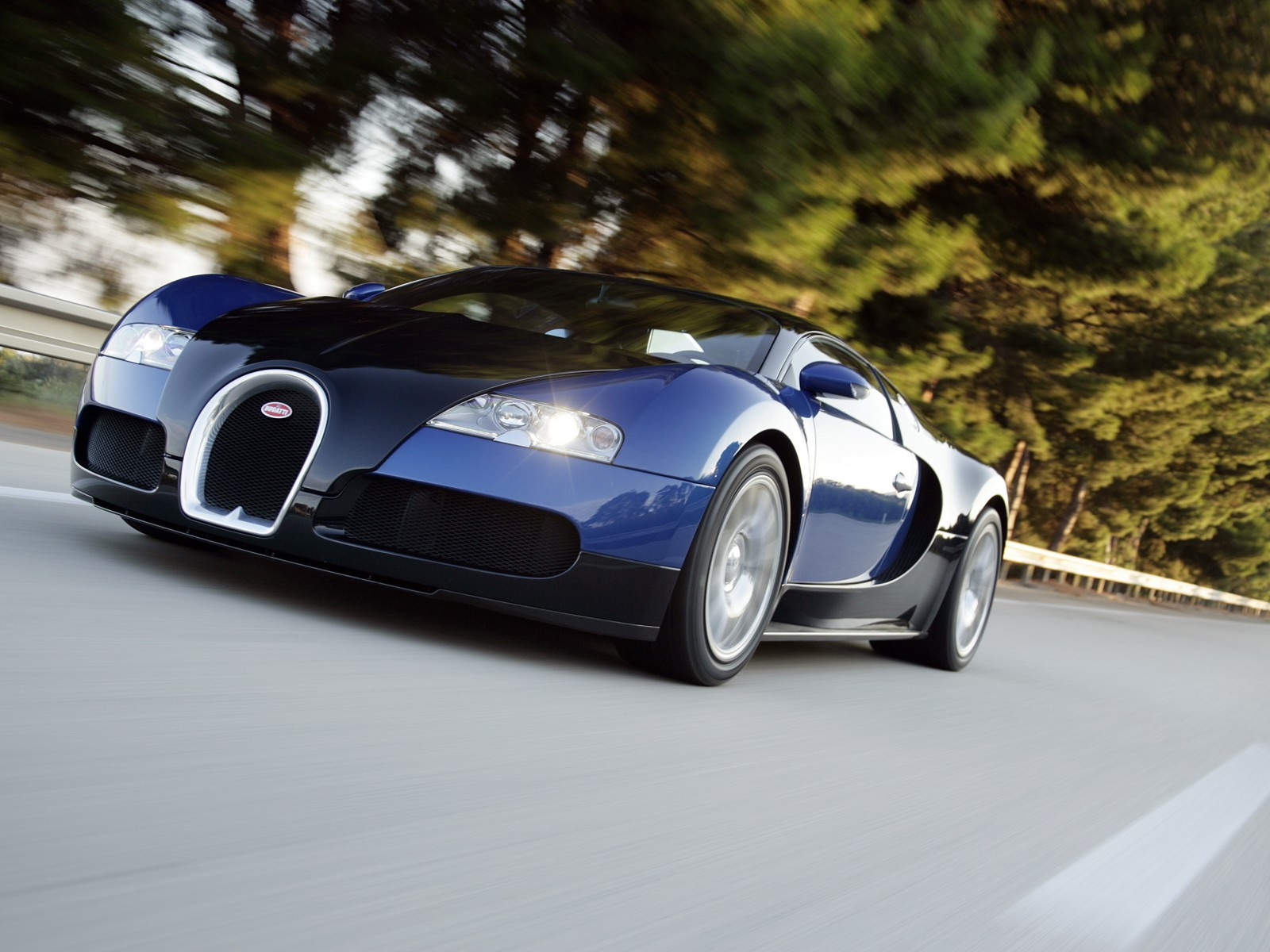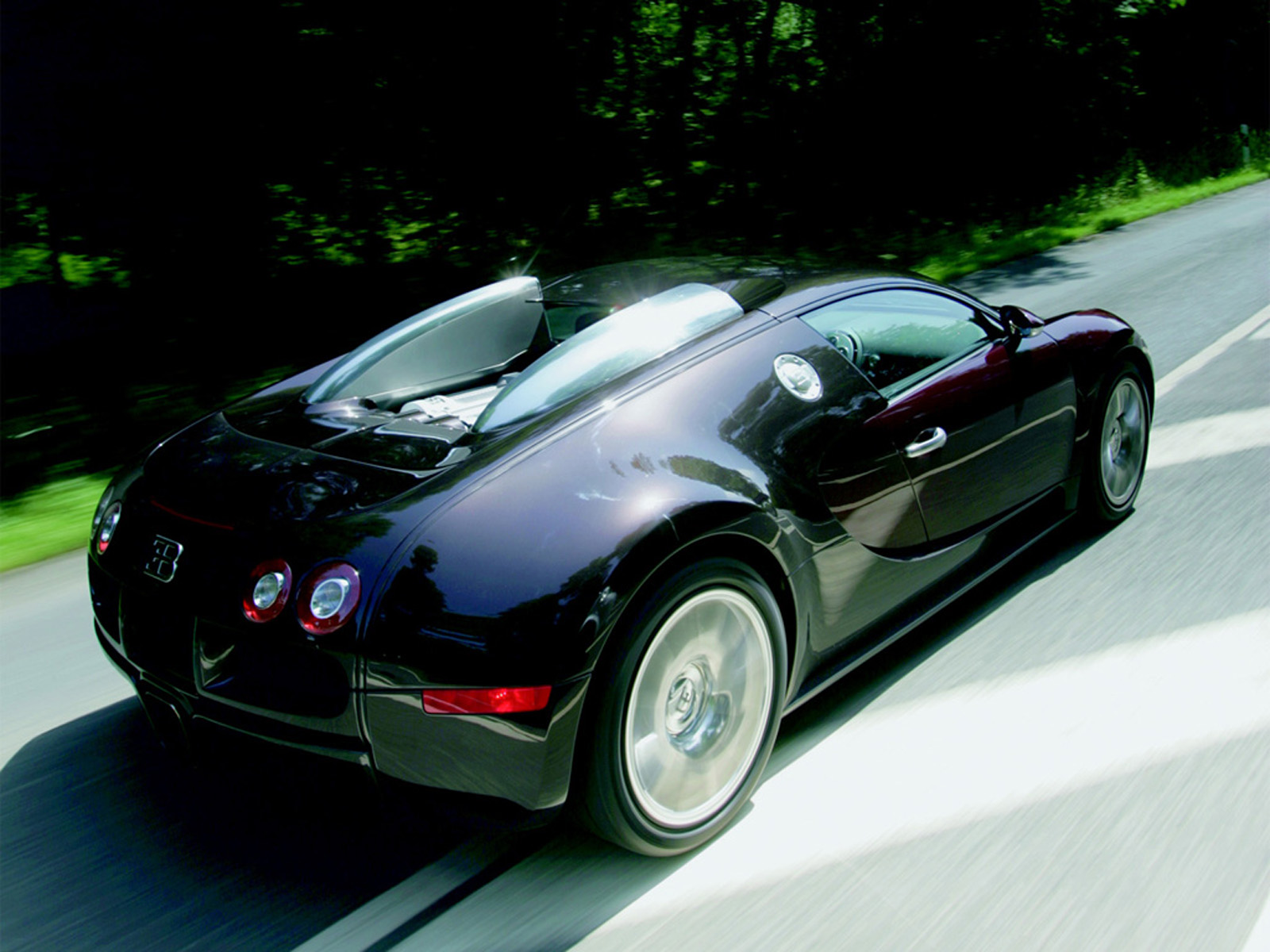
The Bugatti Veyron EB 16.4 is a rear-engined grand touring car. The Super Sport version is the fastest road-legal car in the world, with a top speed of 431.07 km/h (267.85 mph).[4] The original version has a top speed of 408.47 km/h (253.81 mph).[5]
Designed and developed by the German Volkswagen Group and produced by Bugatti Automobiles SAS at their headquarters in Château St.

Jean in Molsheim (Alsace, France), the Veyron's chief designer was Hartmut Warkuss, and the exterior was designed by Jozef Kabaň of Volkswagen, with much of the engineering work being conducted under the guidance of former Peterbilt engineer and now Bugatti Engineering chief Wolfgang Schreiber.
The car is named after French racing driver Pierre Veyron, who won the 24 hours of Le Mans in 1939 while racing for the original Bugatti company. It was named Car of the Decade (2000–2009) by the BBC television programme Top Gear.
A number of special variants have been produced, including two targa tops.

The Veyron features an 8.0 litre W16 engine with sixteen cylinders in four banks of four, equivalent to two narrow-angle V8 engines mated in a W configuration. Each cylinder has four valves for a total of sixty four, but the narrow staggered eight configuration allows two overhead camshafts to drive two banks of cylinders so only four camshafts are needed.

The transmission is a dual-clutch direct-shift gearbox computer-controlled automatic with seven gear ratios, with magnesium paddles behind the steering wheel and a shift time of less than 150 milliseconds, by Ricardo of England rather than Borg-Warner, who designed the six speed DSG used in the mainstream Volkswagen Group marques.

$120,000. It also has permanent four wheel drive using the Haldex Traction system. It uses special Michelin PAX run flat tires, designed specifically to accommodate the Veyron's top speed, which reportedly cost $25,000 US per set.[6] The tyres can be removed from the rims only in France, a service which reportedly costs $70,000.

The Bugatti Veyron has a total of ten radiators.[7]
3 heat exchangers for the air-to-liquid intercoolers.
3 engine radiators.
1 for the air conditioning system.
1 transmission oil radiator.
1 differential oil radiator.
1 engine oil radiator.
It has a drag coefficient of 0.41 (normal condition) and 0.36 (after lowering to the ground),[8] and a frontal area of 2.07 square metres (22.3 sq ft).[9] This gives it a CdA value of 8.0 sq ft (0.74 m2).

According to Volkswagen Group and certified by TÜV Süddeutschland, the final production Veyron engine produces 1,001 metric horsepower (736 kW; 987 bhp) of motive power, and generates 1,250 newton metres (922 ft·lbf) of torque.[1][10] The nominal figure has been stated by Bugatti officials to be conservative, with the real total being 1,020 metric horsepower (750 kW; 1,006 bhp) or more.
.jpg)
The top speed of the original version was verified by James May on Top Gear in November 2006, again at Volkswagen Group's private Ehra-Lessien test track. Jeremy Clarkson, driving a Veyron from Italy to London, noted that at top speed the engine consumes 10,000 imperial gallons (45,000 L) of air per minute (as much as a human breathes in four days).
The Veyron's brakes use cross drilled, radially vented carbon fibre reinforced silicon carbide (C/SiC) composite discs, manufactured by SGL Carbon, which have a much greater resistance to brake fade when compared with conventional cast iron discs. The lightweight aluminium alloy monobloc brake calipers are made by AP Racing; the fronts have eight[7] titanium pistons and the rear calipers have six pistons. Bugatti claims maximum deceleration of 1.3 g on road tyres. As an added safety feature, in the event of brake failure, an anti-lock braking system (ABS) has also been installed on the handbrake.

No comments:
Post a Comment